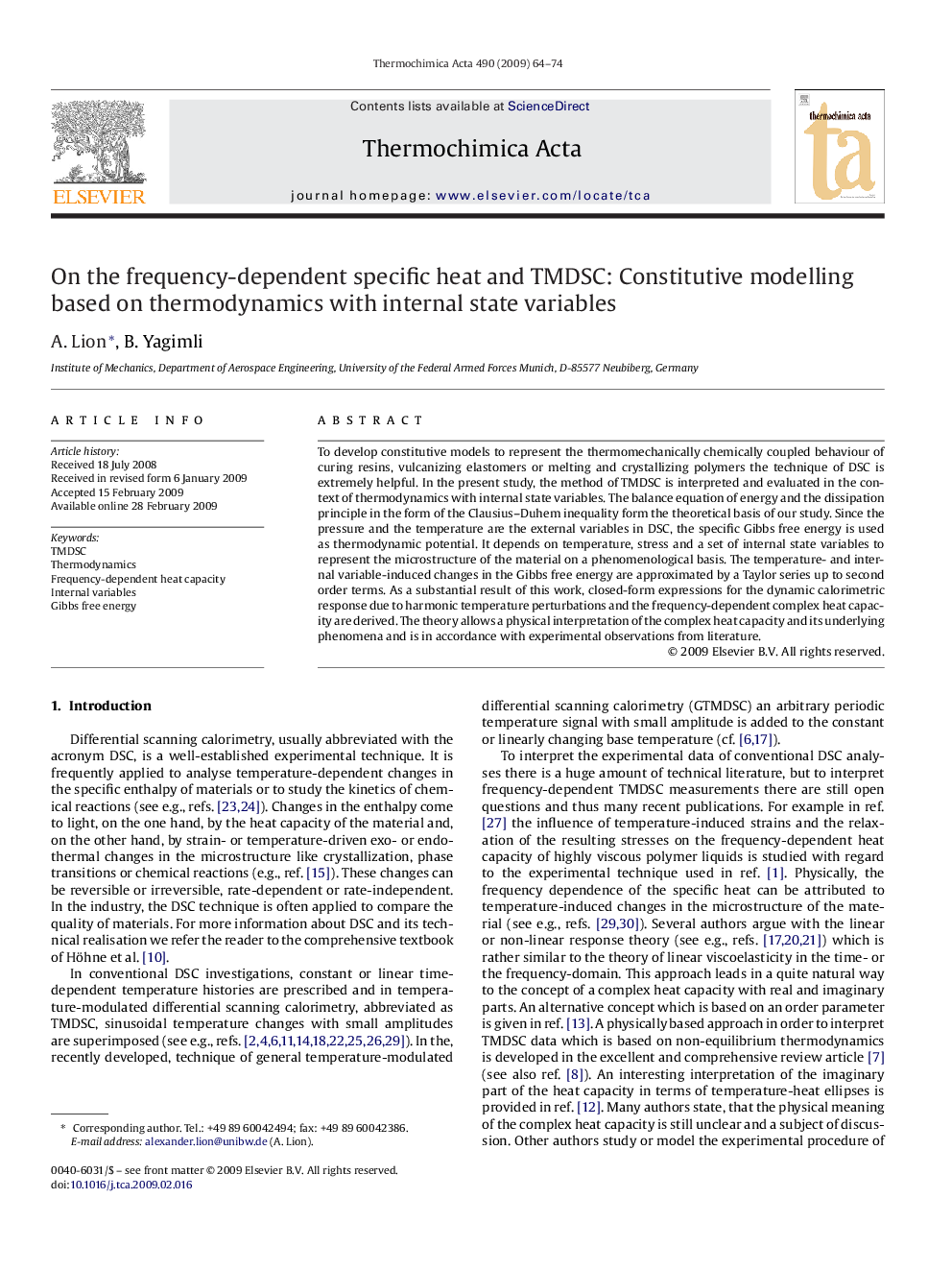| Article ID | Journal | Published Year | Pages | File Type |
|---|---|---|---|---|
| 675079 | Thermochimica Acta | 2009 | 11 Pages |
To develop constitutive models to represent the thermomechanically chemically coupled behaviour of curing resins, vulcanizing elastomers or melting and crystallizing polymers the technique of DSC is extremely helpful. In the present study, the method of TMDSC is interpreted and evaluated in the context of thermodynamics with internal state variables. The balance equation of energy and the dissipation principle in the form of the Clausius–Duhem inequality form the theoretical basis of our study. Since the pressure and the temperature are the external variables in DSC, the specific Gibbs free energy is used as thermodynamic potential. It depends on temperature, stress and a set of internal state variables to represent the microstructure of the material on a phenomenological basis. The temperature- and internal variable-induced changes in the Gibbs free energy are approximated by a Taylor series up to second order terms. As a substantial result of this work, closed-form expressions for the dynamic calorimetric response due to harmonic temperature perturbations and the frequency-dependent complex heat capacity are derived. The theory allows a physical interpretation of the complex heat capacity and its underlying phenomena and is in accordance with experimental observations from literature.
